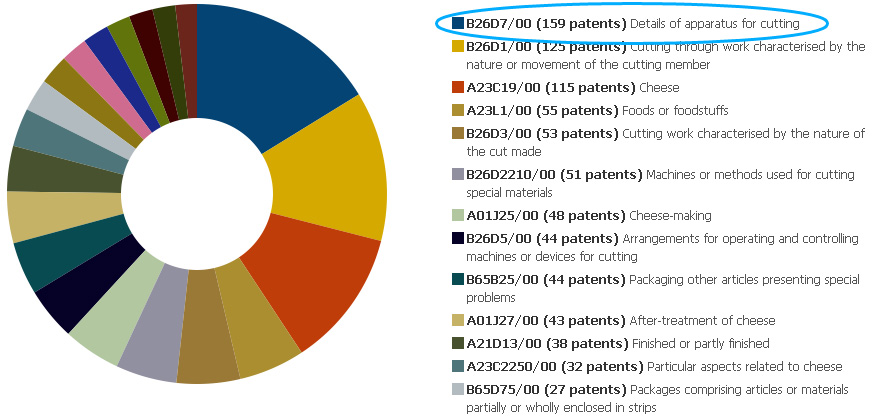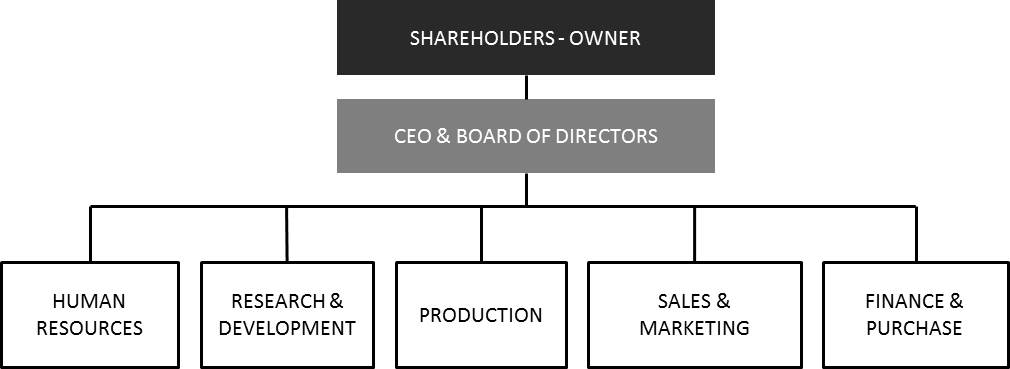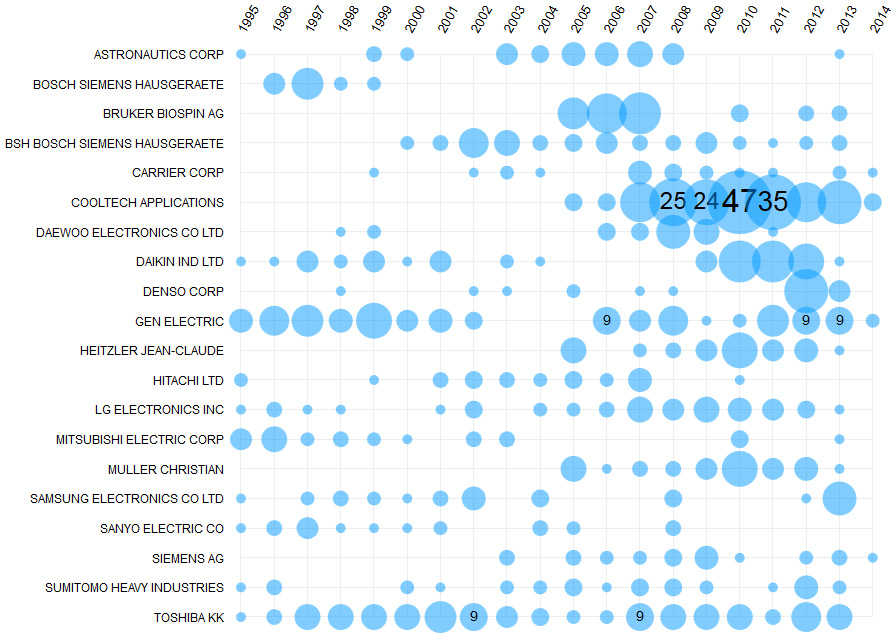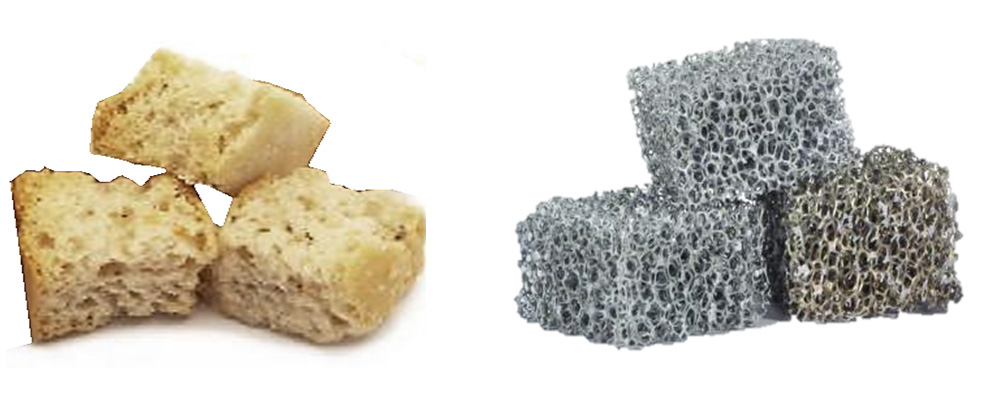By: Simon Dewulf
The patent database, with its 69 million documents is one of the richest resources of knowledge worldwide. The real key to its application is the refined ways to distil the relevant information. This article will highlight novel patent research, and its relevance for each department of a typical company.
Human Resources
Open Innovation In-house
One company challenged our researchers with a problem-solving project. We brought a patent document describing a solution. They were impressed with the beauty of the solution.
“Wow, this is ideal, it is a pity it is already patented, from who is the patent? “
“It’s yours, your company patented this 7 year ago…”
“Really..? Great, then we can use it!”
How does the company know what the company knows? The patent database is an ideal collection for knowledge retainment. It can occur that researchers are working on the same problem in unconnected departments. An example below analyses the company Alcatel, how different company departments are solving similar problems in different areas.
For instance, synchronisation problems are tackled in Alcatel Canada by Terrance Martineau et al, in Alcatel Germany by Ulrich Gebhard et al, in Alcatel France by Samuel Dubus et al. Maybe HR could bring this group around the table to have a little conference. That was the best definition I heard for conference; “a group of people with the same problem”.
Acronymitis
The DSM BoD said we need to raise the ROI from the PLA to meet the KPI across all BU in B2B?!?
Acronymitis can be tough the first day on the job. By pooling all DSM (Dutch State Mines) patents, a glossary analysis brings out all company used acronyms as like AG amyloglucosidase, ARA arachidonic acid, BHA butylated hydroxyanisole, etc. and you can start showing off during your next meeting.
Headhunting with patents
The patent database as a new weapon in the war on talent.
Where do I find new recruits? Another weapon in the war on talent can be the patent database; you can filter an academic analysis:
Headhunting for more experienced profiles is another way to do with patents. You can start by searching for companies of a specific country, in this example Australians. By linking all companies in their common patent domains, you find out which companies have research areas close to yours, i.e. have people with the necessary backgrounds. Not surprisingly, the table below shows some inventors that are present in 3 very different companies, Silverbrook being in research, Resmed in Apnoea systems and Cochlear in hearing equipment.
Table 1 Some inventors across of Australian Companies
| RESMED | COCHLEAR | SILVERBROOK | |
| MCAULIFFE PATRICK JOHN | 48 | 81 | |
| WORBOYS DAVID JOHN | 70 | 53 | |
| FOOTE ROGER MERVYN LLOYD | 7 | 56 | |
| RAJE MILIND | 28 | 1 | |
| MCAULIFFE PATRICK J | 11 | 7 |
Research & Development
Free knowledge
If the global patent database could speak, it would be quite a smart colleague, with occasionally some crazy ideas. But more importantly, his or her out-of-domain knowledge would bring a fresh angle to the companies’ challenges. History has shown that many innovations come from transferring knowledge across industries. Patents are an abundant source of technical information that can be used as inspiration for new technology creation. Over 35 million patents are more than 20 years old and thereby freely available knowledge. The rest can act as out-of-domain solutions and are, within these constraints, also free to use.
A good question is half an answer
A good question is half an answer.
Patent documents are not only solutions, they are also 69 million well formulated questions. By analysing text into ‘problems’ the list of research questions can be organised. Knowing which competitors are working on what problems gives visionary forecasting. This is an example of the problems handled by the company Silverbrook Research.
Fig. 6 Problem Analysis of Silverbrook Research Patents
Research is often RE-search
Have you ever tried to slice sticky cheese? Imagine cutting on an industrial scale? Let see how specific patent searching can give us several solutions to solve this problem. A simple search on “slicing cheese” gives you a patent pool with 820 patents.
Fig. 7 Code analysis (MainGroup) on “slicing cheese”

The largest group, within this pool, has the classification code B26D7/00 “Details on apparatus for cutting” which has globally 41571 patents. To narrow the domain and lift the relevance, we add the term “sticky” to the filter. This results in 140 patents, let’s examine the companies:
Fig. 8 Company analysis on code “B26D7/00″ and “sticky”
Cutting sticky material, this is what rubber and cheese have in common.
The word cloud shows that the cheese industry is not alone facing the challenge of cutting sticky material. Goodyear for example would be an ideal open innovation partner, a company in a completely different domain, solving exactly the same challenge: cutting sticky material, this is what rubber and cheese have in common. Patents of Goodyear can be inspiration for new solutions in the field of cheese slicing.
Inspirational domains
Looking at similar products compared to your own product can help to discover new innovation opportunities. But how do we find relevant other domains in the patent database? Similar products have similar properties and/or functions. One way to find the properties is by analysing the adjectives in front of your product. Let’s examine the generated abstract description for a bicycle based on the adjectives found in our patent pool.
Fig. 9 Text analysis “adjectives” close to “bicycle” (1980-1990)
Similar products have the similar properties and/ or functions, expressed in similar adjectives and /or verbs.
Once we have a selection, we can start a combination analysis that will identify which patents contain 8, 7, 6, … of your search terms. By exploring those patents, you can find the products related to a bicycle, from scooter to wheelchair, products that have similarities with a bicycle.
Fig. 10 Combination analysis (8 terms)

Being in the bicycles business, you can watch their domains for latest innovation, and harvest the good ideas to convert them into bicycle technology. Furthermore, a bicycle producer could explore whether his technology could be brought into these markets or enforced in new Intellectual Property (IP) since the application field would be different.
Open innovation mapping
Open innovation mapping is a single-click generated collection of inspirational companies that are often no direct competitors, but have technology you are looking for.
Fig. 11 Open Innovation Map 1st generation Apple
Due to the setup of the software, the map will explore the domains as far as possible from your known research; e.g. companies that have little in common with Apple, unless the domain depicted by the branch. The more the solutions differ the greater the novelty for your domain.
Fig. 12 “Electrical digital data processing” domain branch with companies
Open innovation mapping is like asking the rest of the world what they know about your daily research questions.
You can actively explore their relevant solutions and harvest new angles to your research. Since the solutions it visualizes are patented in a different domain, you can often transfer the knowledge without royalty and even claim it in your industry. Most of this ‘new for you’ technology has been developed into machinery, so it is often easy to start testing immediately avoiding a large part of the usual research and development trajectory.
Production
Brainstorming with the globe
Formulating a question in an abstract manner, connects us to the global brain.
Imagine a glass of water. How to take the water out of the glass, without touching the glass? Brainstorming will bring a straw, heating or ‘put something in the glass’, ‘use gravity’ or even just wait long enough…; a list of possible solutions. The list, be it extensive, is limited to the experience in the room, the more people in the room, the more ideas. Imagine we have all inventors in the room, through the patent database. We have to abstract our challenge into its function. Leaving the context of glass and water, we can abstract move liquid. Many processes worldwide abstract to “move liquid”. By asking this question we can identify 48 ways to move a liquid which are pre-organised on www.productioninspiration.com. Doing this search directly on a pool of patents will surface more recent technologies. An example on cooling technology is illustrated in the next paragraph.
Scouting for new cooling technology
We start by searching for classification codes related to “cooling refrigerants”. This allows us to quickly find the most related codes without having to perform a patent search. The search for “cooling refrigerants” shows us a lot of codes starting with F25. If we now search for F25, we can see that B and D seem the most relevant for us.
Fig. 13 Code filter searching for code “F25″
The selection of F25B and F25D (children included), last five years results in a good group of 34572 patents. In order to find the cooling technologies we harvest cooling effects on websites like ProductionInspiration on “cool solid”. We then start a text pattern analysis by which we can scan all cooling technologies through our patent pool:
Fig. 14 Text pattern analysis on “cools > solid” effects
Seeing over one line of magnetic refrigeration systems, let us zoom in on magnetic cooling.
A quick web-search reveals that magnetic cooling is being used in new refrigeration and air conditioning as it promises to cut electricity bills in half, improved device efficiency, reduces CO2 production. From these energy savings, it looks like we have a non-volatile refrigerant, eliminating greenhouse gas refrigerants.
Magnetocaloric Effect
A strong field of a permanent magnet affects a magnetocaloric substance and orients itself alike. This causes the lattice of the substance to vibrate and the temperature to rise. By removing the magnetic field, the atoms return to their original ‘random’ orientation, and the substance cools down. Now by doing this process, but cooling down the magnetocaloric substance before removing the magnetic field, (with coolant), allows the temperatures fall even lower. The hot coolant passes through the now colder substance, cooling down the coolant. The magnetocaloric substance heats up again and the process stats again, up to ten times per second.
Magnetic cooling
Creating a new pool of “magnet*” in F25B and F25D, in last 5 years gives us 3541 patents. Running an “Applicants vs time” analysis shows us a strong rise over the years with companies like Cooltech, General Electric and Toshiba in the lead.
Fig. 15 Applicants vs time analysis
Further web-searching shows the French company Cooltech has launched a magnetic refrigeration system. The firm, together with six partners has rapidly made an advanced development of a commercial product, thanks to the backing of technology investors, including 20 million euros from the French government.
Fig. 16 Patented magnetic refrigeration system of Cooltech
Academic Research
Fig. 17 Academic analysis on “magnetic cooling” patent pool and MagCool prototype of DTU
The academic analysis above shows a strong activity of Dutch and Danish universities. “No other research groups that work with magnetic cooling have managed to do that”, says Christian Bahl, a senior scientist at the Energy Conversion department at Denmark’s Technical University (DTU) in ScienceNordic last summer.
Materials
Fig. 18 Elements analysis on “magnetic cooling” patent pool
The element analysis above, show the use of materials that have a strong magnetocaloric effect room temperature; Galadium (Gd) , and neodymium (Nd) both expensive materials. The research is open for cheaper alternatives.
Sales & Marketing
More of the same
The competitors of my clients can be prospects.
The easiest way to harvest more business out of the patent database is: Take your clients, make a competitor analysis, and target them as customers. Where else can you generate a list of competitors in one click?
If it is a material or a chemical you are selling, it is easy to filter all companies that need that chemical, since it is published as an ingredient in their inventions. The list will contain your own competitors too; however, it wouldn’t be the first time competing businesses are supplying one another. The figure below shows a list of potential clients for metal foam, a product used in the case below.
Fig. 19 Combined analysis, ‘users’ of metal foam and competitors of that Rolls-Royce IP
Combining both approaches, a list of potential clients of a new material can be distilled; every company can be expanded in a list of competitors, which become new potential clients.
More for less
All innovations want more performance, less harm, more convenience or less cost.
The innovation value of new solutions can be measured on the basis of 4 factors: more performance, less harmful, easier and cheaper. We take the example of a projector. The patent value analysis will scan the projector patent pool and automatically classify the patents in the four categories, related to what value they claim.
Fig. 20 Value elements of a projector
Image quality or resolution, are elements related to the performance. The second column brings (less-) noise or heat; less harm is also more value. The third column shows all elements that are related to the ease of use, autofocus, convenience, operability. Finally, in the fourth column brings cost into the equation. These are exactly the elements that can be marketed in a sales pitch as benefits over competing technologies.
Fig. 21 Modifier analysis on projector
A slightly different spotlight on the same patent pool is an analysis that seeks where in the domain the modifying buttons are. What are they trying to increase, decrease or stabilize? So more brightness, more contrast, less power consumption and stable position, for example.
The terms that are classified in both of these analyses, are the typical terminology that is used in marketing campaigns, flyers, websites and sales pitches. They can be used as inspiration for sales and marketing.
Solution seeks problem
Rather than having a problem that is looking for a solution, marketing is occasionally faced with a solution looking for problems.
Rather than having a problem that is looking for a solution, marketing is occasionally faced with a solution looking for problems. Having invented a new material in the company, how can all potential clients be identified? Take the case of metal foam. One of the first metal foam was created by baking bread with metal powder. The foam can be made out of any metal, typically aluminium, strong and light, open cell, thermal conductive and beautiful. But, who needs it…?
Fig. 22 Bread / Bekaert Metal foam
There is a very systematic way to identify potential clients for new products or technology. It is based on identifying the benefits of the material, and scanning which patents describe that need. A simple search on Noun Groups in metal foam patents will bring an overview of existing uses. E.g. “crosslinked cellular metal foam serving as catalyst support and heat dissipating structure” – KR20070106509A The figure below shows initial results in batteries, catalyst, filter in exhaust systems, structural elements in steam turbine rotor, etc.
Fig. 23 Some applications in metal foam patents
If the mother is identified, we can find other children.
Even though they are existing uses, they could be new to the inventing company. In the case of Bekaert, the difference was made in the cheaper production of the foam, so existing applications are potential targets. However, the approach is aimed at finding new applications. How?
If the mother is identified, we can find other children. The applications are built around the structural, thermal, flow, electrical and sound properties of metal foam. In order to systematically look for new applications for this material, the properties and functions need to be identified. Once a selection is made, a combination analysis can be loaded to find patents outside the pool, which require the same characteristics. Figure 24 shows a selection of 8 terms, scanned through the global database. The top 1000 patents reveal new products, such as heat sink and cool fin. The biggest advantage of metal foam is that it is light and has a rapid heat dissipation. Looking at the patent pool, one large area immerging is the LED light cooling.
Fig. 24 Combination on metal foam patent characteristics into global patent database revealing heat sink, cooling fins, and heat dissipation in LED lights
TAL replaced traditional cooling fins by aluminium foam, claiming in their product B4 “This technology uses aluminium foam to conduct heat from the LEDs. The foam has an extremely high surface aspect ratio and is very compact.”
Fig. 25 The solution of TAL, aluminium foam and Philips patent WO2007148280 metal foam light armature
Properties link to functions link to applications.
Since the advantages of metal foam seems obvious a patent pool on cool fins or heat sinks gives over 60000 patents that can reveal possible new applications for the material. That is just on property, it is possible to explore each and every property function relation through the patent database. An example exploration is illustrated schematically below.
Fig. 26 Potentially new applications of metal foam through patent property function scanning
Finance & Purchase
Building a shopping list with patent research.
A competitive vending price starts with competitive purchase of raw material and machinery. Finance and purchase can build a list of competitors of suppliers. They open the choice to source the more performant, greener, easier or cheaper material, be it ingredients or machinery.
Fig. 27 Companies that have IP in cyaonacrylate
As an example the figure above shows the companies with patents in Cyanoacrylate, commonly known as super glue. Many of these companies are suppliers of the chemical, so this is a potential “shopping” list.
CEO and Owners
Patent Value
Fig. 28 Patent Value graph of Unilin highlighting their Uni-click IP
Most owners are happy twice; when they incorporate or buy the company, and when they sell it. They are interested in value creation, whereas IP can be valued within the sales price. There are many models to value IP, here is one on Unilin, the Belgian founded company with the patent on the Quickstep “Uniclick’. Their 1873 patent documents are organised in an XY value graph according to recency and forward/backward citations. Part of a family of 250, their famous Uni-click patent (WO9747834A1) identified top left, has 6 Backward an 317 Forward citations. To boost the value of the company and its IP, solution marketing research (as shown in the metal foam case) can be done on both products, and machinery. For example, this unique connecting system could be applied in tables, roofing or any other area where a quick and easy connection system is required.
By Simon Dewulf
About the Authors

Simon ran several companies in the area of product and process innovation consulting, creativity software, patent research, food innovation and funding. He has a background in Material Science, Product development and creativity research at Imperial College. Today Simon is with www.aulive.com an online resource for creativity and innovation. His main area of research is the development of an artificial idea generation and problem solving software.
Photo: Patents from Shutterstock.com



























